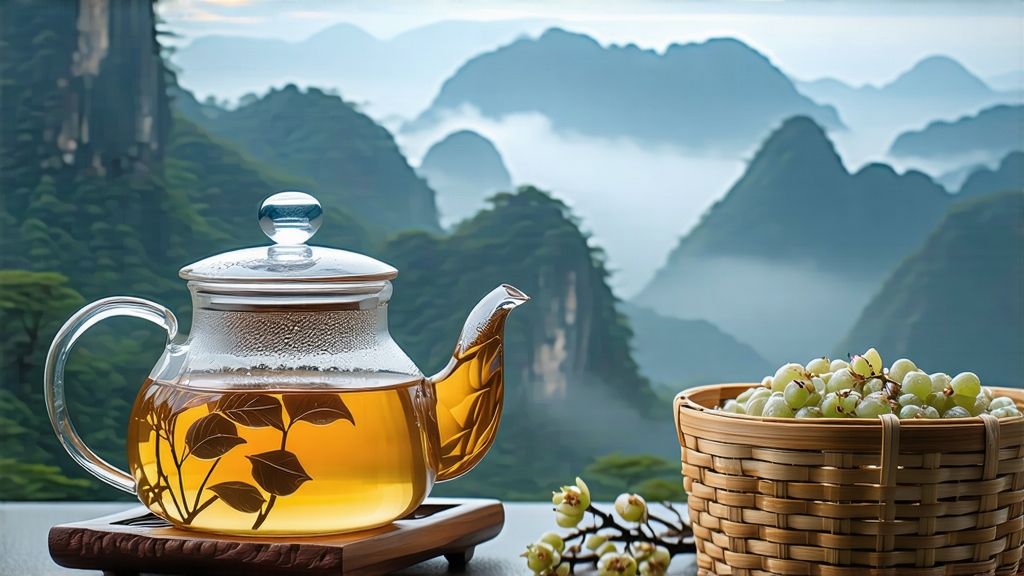
Bai Hao Yin Zhen—literally “White Hair Silver Needle”—is the most aristocratic expression of China’s white-tea family. To international drinkers who equate “white tea” with any pale infusion, Silver Needle quietly corrects the misconception: it is not a color, but a season, a terroir, and a discipline condensed into a single, luminous bud.
1. Historical whispers
White tea’s written record begins in the Song dynasty (960-1279), when imperial tribute lists mention “white cakes” pressed from large-leaf varietals in northern Fujian. Yet Silver Needle itself steps onto the stage only during the late Qing, around 1857, when tea merchants in Fuding County noticed that the local “Dabaihao” (Big White Down) cultivar produced unusually plump buds tipped with silvery fuzz. These buds, picked only in the brief window between early March and Qingming (Tomb-Sweeping Day), were too elegant to be baked or rolled; they were simply sun-withered, then dried. European traders stationed in Fuzhou snapped up the novelty, shipping it to London and St. Petersburg where it fetched prices rivaling first-flush Darjeeling. In 1891 a Fuding producer named Wu Changshun entered Silver Needle in the Melbourne International Exhibition; it won a gold medal, and the tea’s global reputation was sealed.
2. Terroir and cultivar
Authentic Silver Needle comes from two protected geographical origins: Fuding and Zhenghe, both in northeastern Fujian. Fuding’s red granitic soils, 300–800 m elevation, and maritime mist moderate temperature swings, coaxing the buds to synthesize more amino acids and less tannin. The official bush is Fuding Dabaihao, whose buds can reach 3.5 cm, each cloaked in a down so dense it refracts light like frost. Neighboring Zhenghe uses the Zhenghe Dabai cultivar; its buds are slightly shorter, yielding a rounder, bean-like sweetness. Purists debate which style is “true” Silver Needle, but both share the same plucking code: one bud, no leaf, before Qingming.
3. The craft of “doing nothing”
Making Silver Needle looks like inaction, yet every hour is calculated. After dawn plucking, buds are spread on bamboo trays 1.5 cm thick and left to wilt under natural sunlight (18–26 °C, 60–70 % humidity). Masters call this “walking the water”: as moisture evaporates, cellular walls loosen, allowing grassy aldehydes to drift away while preserving floral volatiles. If the sun grows too fierce, trays are slid into the shade; if clouds gather, they may be moved onto glass-roofed verandas that trap diffused light. After 36–48 h the buds lose about 70 % of their weight, curling into tiny quills that rattle when shaken. A final gentle bake at 40 °C for twenty minutes halts oxidation at roughly 5–8 %, low enough to keep the tea in white-tea territory yet high enough to caramelize surface sugars, giving the dried bud a faint aroma of honeyed hay. No kneading, no pan-firing, no rolling—just time, air, and the watchful eye of a craftsman who must decide when “nothing more” is precisely enough.
4. Grading and storage
Unlike green tea, Silver Needle improves with careful aging. New buds taste like light melon and cucumber skin; after three years of cool, dry storage the same liquor darkens to pale amber and develops notes of marzipan and white orchid. Connoisseurs therefore grade by both harvest year and bud integrity: top lots contain ≥ 95 % intact tips with no stem or leaf fragment, while lower grades allow 10 % broken pieces that steep faster but lack the sustained fragrance.
5. Brewing: less is more
Silver Needle’s delicacy punishes heavy hands. Start with 3 g of buds (about two heaping teaspoons) in a 200 ml clear glass or thin-walled gaiwan. Water should be 80–85 °C—cooler than green tea because the bud’s enzymes are easily scorched. After a five-second rinse to awaken the down, infuse 30 s; the first pour releases a shimmer of platinum liquor